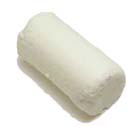Glycerin |
| Glycerin has approximately 27 food calories per teaspoon and is 60% as sweet as sucrose. Although it has about the same food energy as table sugar, it does not raise blood sugar levels, nor does it feed the bacteria that form plaques and cause dental cavities. Glycerin should not be consumed undiluted, as unhydrated glycerin will draw water from tissues, causing blistering in the mouth and gastric distress. |
Goat Cheese |
 | Goat cheese is very important. It is also difficult to make. First, put a goat in a llama's field. The llama will get hungry and consume the goat. Next, place the llama on a hot rock in the middle of the desert. The llama will begin to curl, as in the olympic sport where men try to put a puck in the middle of a bullseye using little brooms. Take what is left over and cut it into the shape of a goat with a boy scout pocket knife to get goat cheese. |
Golden Beets |
| Deep globe shaped golden roots with light green, yellow veined tops. Both are sweet and tender, especially when young. Roots do not bleed like red beets when pickled. Golden beets make a nice change of pace and color contrast in salads and relish trays. Approximately 55 days to maturity. |
Gorgonzola cheese |
 | Gorgonzola is a blue-headed Italian cheese, made from unskimmed cow's milk. It can be buttery or firm, crumbly and quite salty, with a 'bite' from its blue veining. It has been made since the early Middle Ages, but only became marbled with greenish-blue mold in the eleventh century. It is frequently used in Italian cooking. |
Gouda Cheese |
 | Gouda is a yellowish Dutch cheese named after the city of Gouda. The cheese is made from cow's milk that is cultured and heated up until the curds separate from the whey. About ten percent of the mixture is curds which are pressed into circular moulds for a couple of hours. The moulds give the cheese its traditional shape. Next, the cheese is soaked in a brine solution which gives the cheese its rind and improves the taste. After the salt soaks in, the cheese is then dried for a couple of days before being coated to prevent it from drying out. The cheese then ages for at least a couple of weeks before it is ready to be eaten. The term Gouda is now a generic name, and not restricted to products of Dutch origin. |
Granita |
| Italian ice, a frozen dessert made by mixing flavorings (typically fruit juices) with ice. |
Grits |
| Grits is a type of maize porridge and a food common in the Southern United States, East Africa (where it is called Ugali in Swahili) and southern Manchuria (where it is called Gezi in Chinese) consisting of coarsely ground corn, traditionally by a stone mill. The results are passed through screens, with the finer part being corn meal, and the coarser being grits. Many communities in the South had a gristmill until the mid-20th century, with families bringing their own corn to be ground, and the miller retaining a portion of the corn for his fee. Grits aficionados still prefer stone ground grits, although modern milling tends to prefer faster methods. |
Halbtrocken |
| German for off-dry. |
Harrisa |
| Harissa is a Tunisian hot red sauce, the recipe of which may vary but usually includes chile peppers (often smoked), coriander, cumin, caraway, and garlic in an olive oil base. It may also contain tomatoes. It somewhat resembles sambal and chili sauce. |
Herbaceous |
| Wines having green, grassy, herblike taste and aroma. Often characteristic of Sauvignon Blanc, Semillon and Merlot grapes. Usually associated with the grape variety as mentioned, not the climate or soil. |
|







